Conservation of Fine Art MA student Izzy McKie is with the team for the next few weeks, working on a 19th-century gilt picture frame which has been brought up from the art store for some TLC.
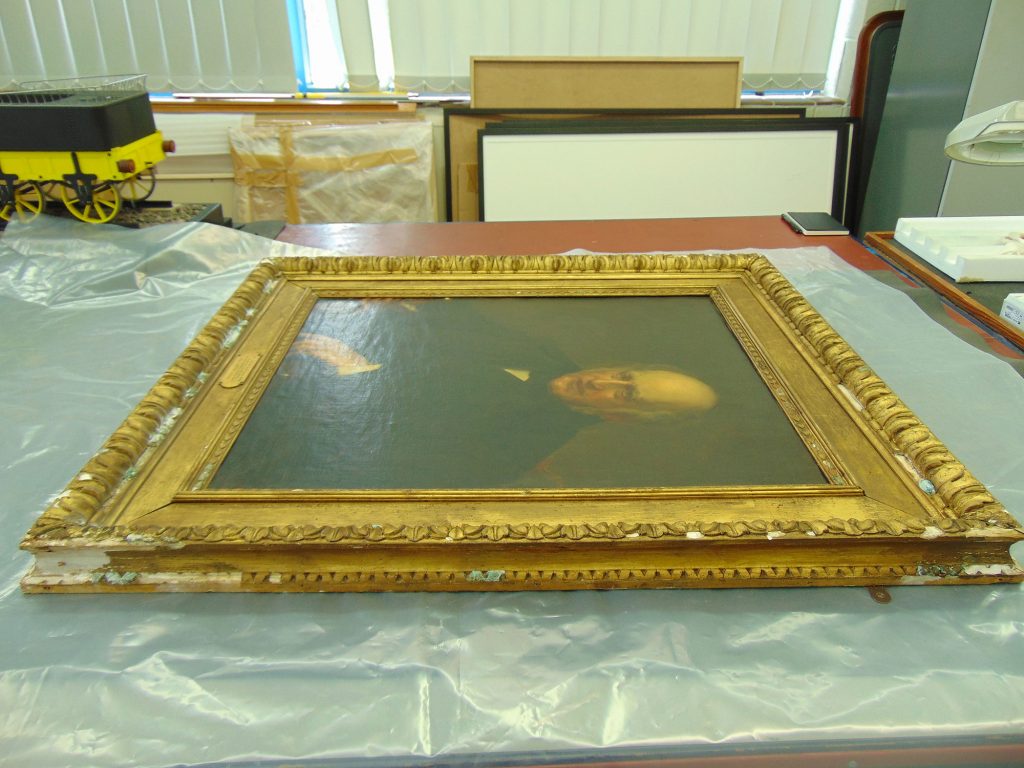
The picture itself is a question for a later date—but as Izzy explained, frames themselves can be highly symbolic and tell us a lot about their owners, just as paintings can. This frame, for example, features a carved design of acanthus leaves, recognisable to its original Victorian audience as a symbol of the fine arts. In its original gold leaf finish, the frame would have been a resplendent signifier of its upper-middle-class sitter’s financial capital.
The painting is a portrait of Charles Alexander Wood of the Great Western Railway, gifted to his wife Lady Wood by the Chairman and Directors of the GWR around 1890. A grand portrait painting like this was the selfie of the day—a favourable representation that conferred the sitter’s status.
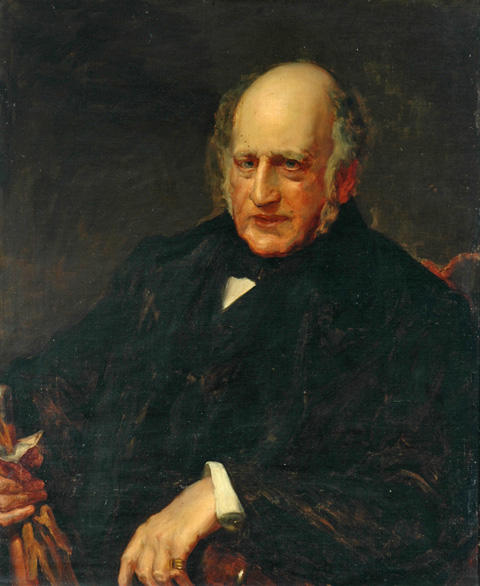
This picture presents several challenges to Izzy and the team. For example, the painting itself has been cut down to size at some point—possibly to fit this particular frame—and is affixed to a hessian canvas in an attempt to restore some of the rigidity to the structure of the canvas. However, the first task is the frame itself, which has unfortunately been exposed to damp conditions, allowing mould to develop on sections of the frame.
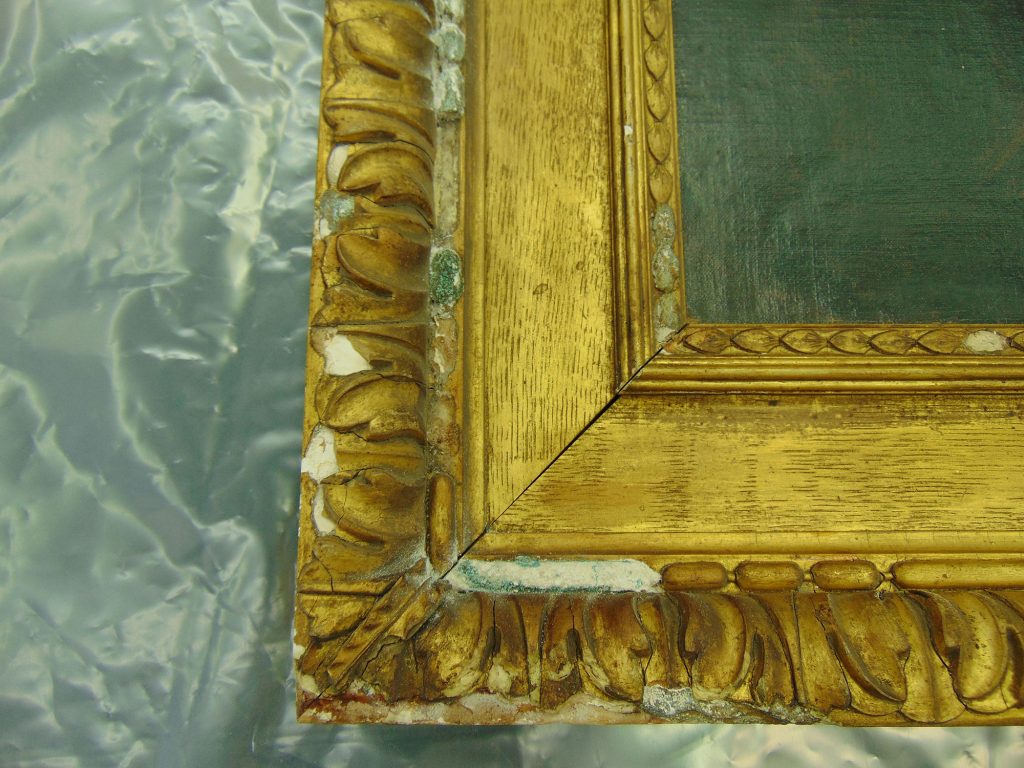
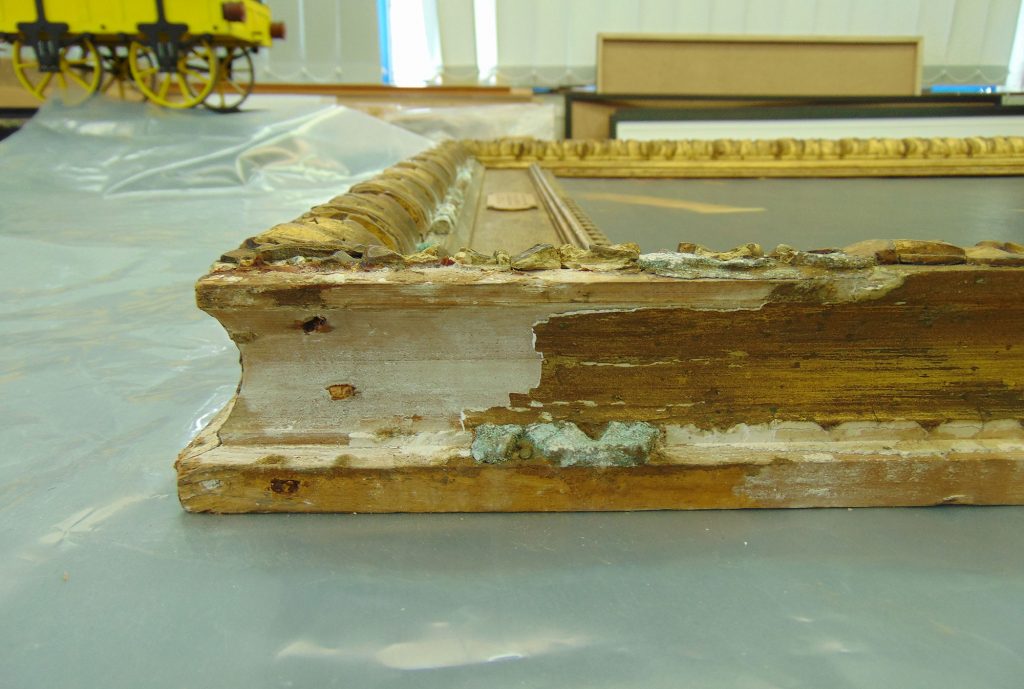 The original plaster used to produce the leaf design has also dried out over time and has cracked, causing sections to come loose and break off. Additionally, a previous attempt at conserving the frame has unfortunately not helped—the repairs were done using a standard Polyfilla, which Izzy has had to remove as it was causing more damage to the frame components.
The original plaster used to produce the leaf design has also dried out over time and has cracked, causing sections to come loose and break off. Additionally, a previous attempt at conserving the frame has unfortunately not helped—the repairs were done using a standard Polyfilla, which Izzy has had to remove as it was causing more damage to the frame components.
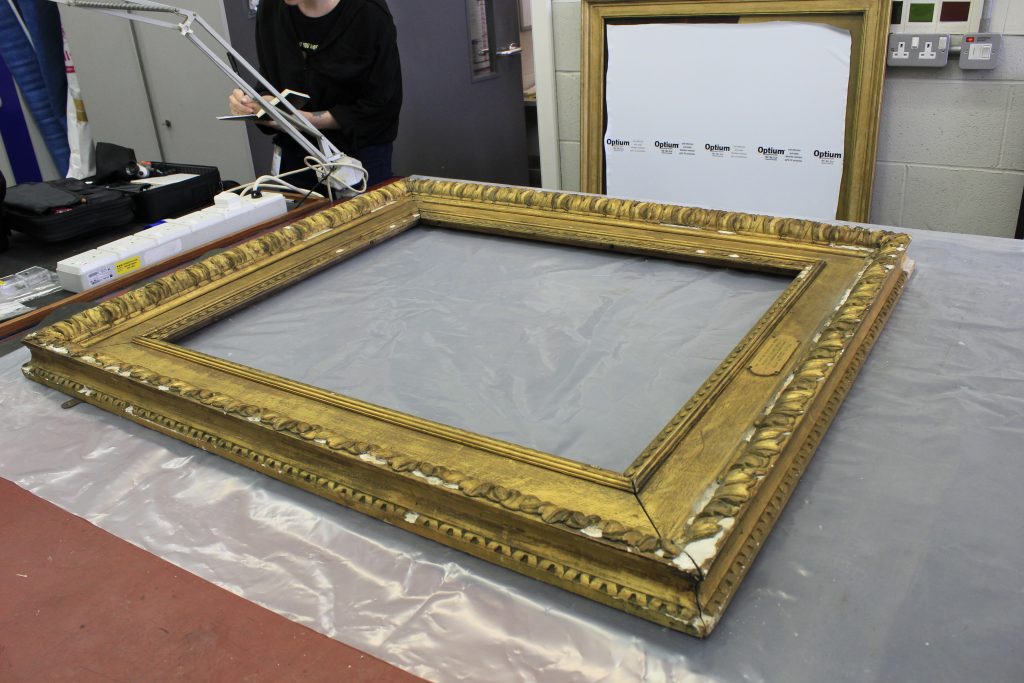
So far she’s spent a day and a half assessing the frame’s condition and working to remove the damaged and mouldy sections of plaster and modern filler; the cleaning and finishing will likely take a large portion of the next five weeks she’s at the museum. If time and resources allow, she may then work on reapplying gold leaf to restore the gilt finish.
Izzy uses UV light to identify modern or otherwise inappropriate adhesives and other materials she might have to deal with. When under UV light, substances will either fluoresce, reflect or absorb the light—from this she can use a process of elimination to deduce what the substance might be and how to proceed. Talk about CSI: National Railway Museum!
The next job is a process known as safety margin testing (or patch testing) – trying small amount of cleaning chemical on a small area to determine if it will clean the surface, or react and possibly cause damage. Once a suitable safe chemical has been identified, the cleaning can begin—a delicate and involved process.
The cracks in the frame will also need filling, and then Izzy can use a silicone mould-making material to take an impression of more complete sections in order to produce castings to replace the lost bits (the same technique used on the frieze on Queen Victoria’s saloon).
Once all of this has been done, the frame should be somewhere approaching its original state—stay tuned for an update from the conservation workshop and to see the results of Izzy’s work in the coming weeks.
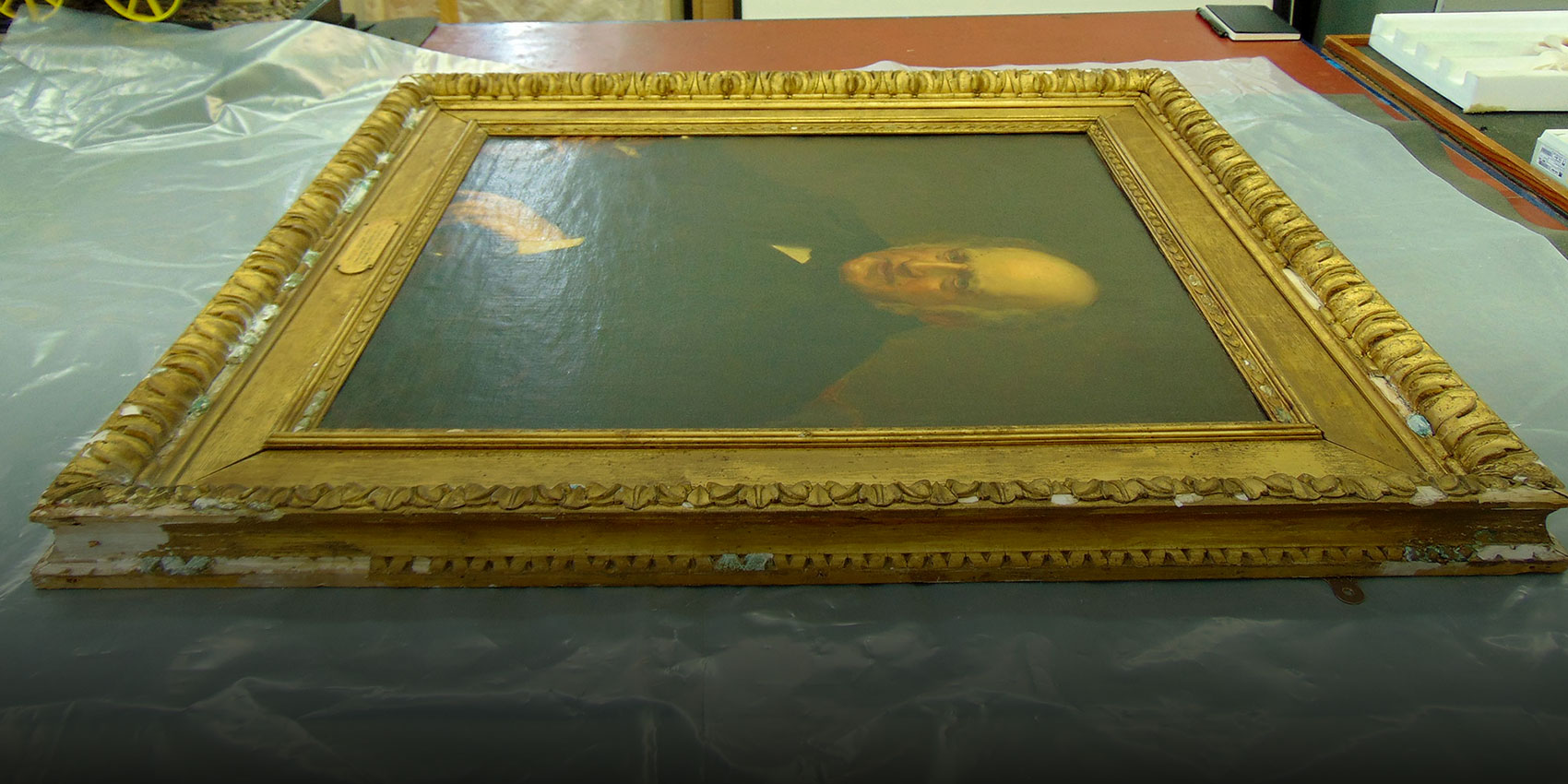
‘Quotidian’, that’s a difficult word, had to look it up!
This is an interesting article giving insight to how things are brought back to life and a lovely working experience for Izabella whilst completing her MA. I look forward to seeing the end result.
Thanks
Will it then be out on show? Seems a pity to do all this work and then simply store it again in the archive.